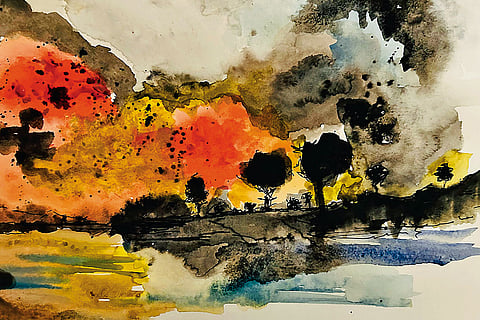
- Destinations
- Experiences
- Stay
- What's new
- Celebrating People
- Responsible Tourism
- CampaignsCampaigns
- Subscribe
- Buy Now

Life Of A Traveller | Soon, I will move my base from Sweden to the US. I have spent 16 years in Sweden, and over the years, I have collected things, built a home, and developed a few friendships. I think of myself as a traveller and dislike that travellers, like wandering Sufis, should collect anything physical. “What is concrete will one day become dust,” I had told myself.
However, I caved in. I bought a small apartment and carefully decorated it with mementos gathered over years of travel: the three small wooden rafts from Geiranger, Norway, that now sit on a bookshelf I bought from a woodcarver in Ethiopia. There’s also a brass statue of Ganesha, picked up 25 years ago by my wife’s parents on a trip to the Ellora Caves. It now greets visitors entering our apartment. My mother-in-law passed it on to me while reminiscing about that family trip. Since then, she got divorced and died last year—unable to defeat the cancer that ravaged her body. The children from that family are now scattered across three continents, their sole connection happening through meticulously timed WhatsApp calls squeezed into narrow windows across time zones.
The Ganesha statue is the only tangible reminder of what was once a complete family, and it would be heartbreaking for my wife to part with it.
And so, despite considering myself footloose, we anchored ourselves to one place, knotting our lives with these collectables.
Now, as we prepare to uproot ourselves and move to another continent, we face the question: what, if anything, should we bring with us? Can we leave behind everything we’ve built over the years? Can we begin anew in an empty house, spotted only with essentials and let go of the reminders of the lives we’ve lived so far? I once believed that home is not where you live but what lives inside you: my parents, my wife, memories, along with my fears and jealousies. But what lives inside me, I wondered.
I pulled out the notebook and tore out a blank page. Closing my eyes, I looked inward, navigating the recesses of memory to uncover what lay hidden there. For the first few minutes, nothing appeared, and I panicked. Had I become so entangled in the external world that my memories were now a mess of to-dos, fears, worries, desires, and expectations? I stayed silent and kept searching within. Slowly, the mind began to calm, unfurling memories: the road trip I took in Norway with my uncle and aunt, who were visiting us for the first time; the smile on my mother-in-law’s face as she tasted food from my plate, unaware of the cancer eating away at her from within. And then, surprisingly, the memory of plucking grapes in Kenya surfaced—a hot day, the berries going straight from shrub to mouth. That’s what I remember from that trip, not the Maasai jewellery now displayed in my drawing room for visitors to admire.
What if I lost the objects, the house, the memorabilia in a freak fire? What would be left of me then? I hope such devastation never happens, but I also know these inanimate objects will likely outlive me, carrying no attachment to my existence. Should I let them go and move on to the next leg of my journey?
Whether across continents or to a new home in the same city, a move offers liberation. So why not make the most of it? Why carry all we’ve collected and live entrapped in the same reminders?
The thought crystallized inside me, and as it did, I unwrapped the Ganesha statue I had prepared to pack for the movers and placed it back where it belonged—facing the front door. It will remain there, a silent sentinel of our past, while I move forward to begin anew.
